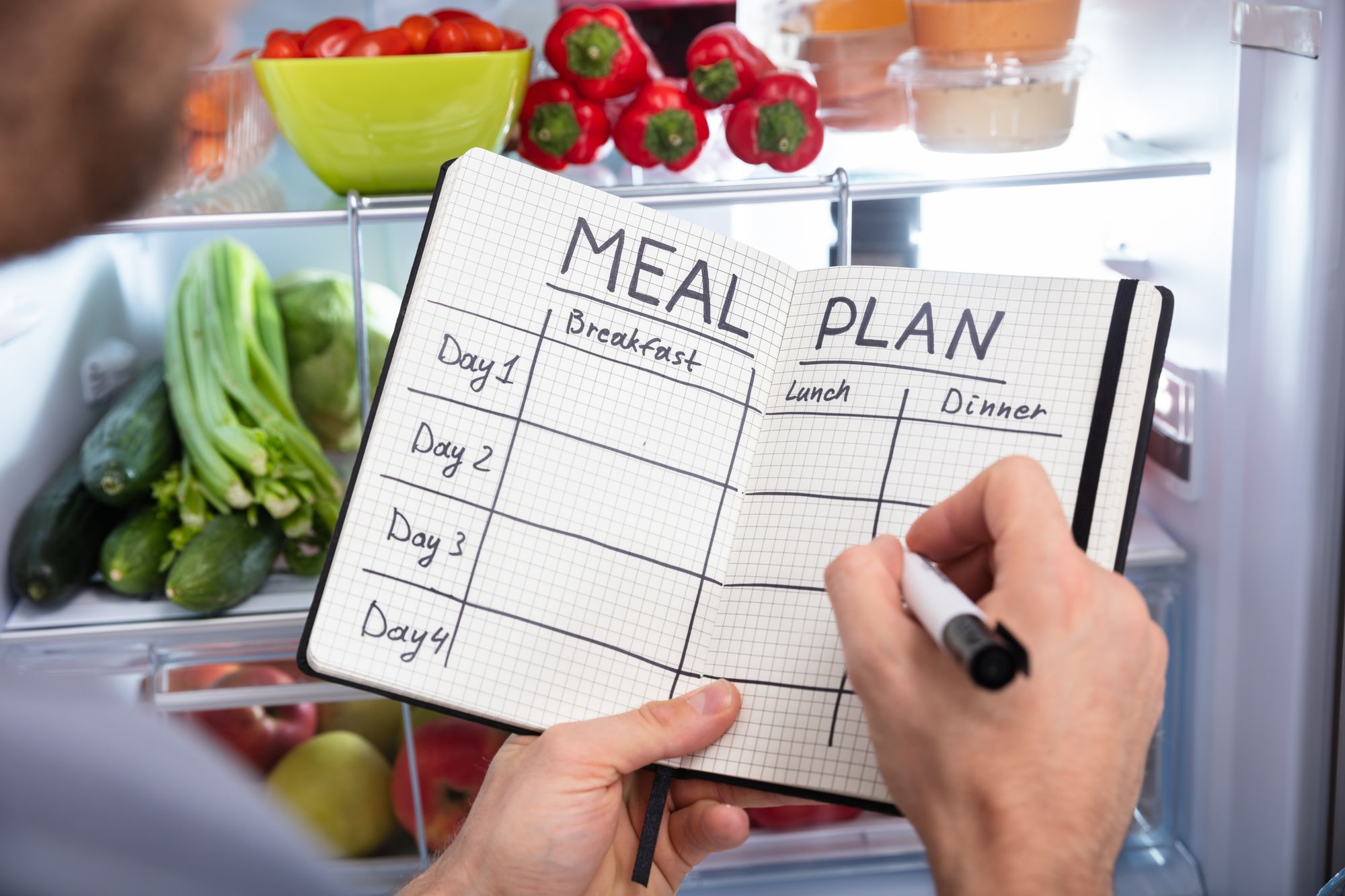Losing one pound per week may appear challenging, but what if we told you that achieving sustainable weight loss can be simpler than you imagine? In this comprehensive weight loss guide, we will explore an approach that doesn't involve extreme diets or strenuous exercise regimens, but rather focuses on cultivating healthy and sustainable lifestyle habits. We interviewed Tracie Haines-Landram, CSCS, a certified strength and conditioning specialist and nutrition coach with Barbend, who will unveil the strategy for losing one pound per week, leading to gradual and lasting weight loss. When consistently followed, this method can yield enduring results without the stress and frustration often associated with weight loss.
Shedding one pound per week may sound modest, but it aligns with a sustainable and healthier approach to weight management. It involves creating a calorie deficit that isn't overly restrictive, allowing you to relish a variety of foods and find enjoyment in your journey towards achieving your goals. However, losing one pound a week is about more than just the numbers on the scale; it's a holistic voyage towards a healthy and thriving lifestyle that endures over the long term.
How Many Calories Must You Burn in Order to Lose One Pound of Body Fat?
Haines-Landram elucidates that approximately 3,500 calories constitute one pound of body fat. Consequently, to lose one pound over the course of a week, you must aim for a calorie deficit of 3,500 calories relative to your weekly intake. A reasonable target is to create a daily calorie deficit of 500.
"To achieve a one-pound weight loss, it's necessary to establish a weekly deficit of 3,500 calories, which translates to a daily deficit of about 500 calories," explains Haines-Landram. "This is ideally achieved through a combination of consuming fewer calories through proper nutrition and expending more calories through physical activity. However, it's crucial to approach weight loss in a sustainable and healthy manner. Keep in mind that individual variations exist, and factors like metabolism and body composition can influence the rate of fat loss.
1) Keep a Food Diary

Monitoring your dietary intake offers a clear and insightful view of your daily calorie consumption, empowering you to make informed decisions. To implement this, document your meal choices, quantities, and your post-meal sensations.
"Utilizing a nutrition tracker to monitor your food intake can be a potent tool in accomplishing your weight loss objectives, blending science with practicality," Haines-Landram suggests. "Given that our smartphones are constantly within reach, using them to quantify your calorie intake is an educational practice that can assist you in maintaining a sustainable calorie deficit for fat loss. Furthermore, food tracking fosters mindfulness, enabling you to make informed decisions regarding portion sizes, nutrient distribution, and the overall quality of your food.
2) Eliminate Empty Calories

Steers clear of highly processed junk foods and sugary snacks. These items often contain excessive added sugars, oils, and empty calories, providing minimal nutritional value. Instead, opt for nutrient-rich choices that nourish your body and promote a healthy approach to weight management.
"To initiate a calorie deficit, the initial step in reducing excessive calorie intake should involve cutting back on 'empty calories,' which refer to foods that contribute calories but offer little to no nutritional benefits, such as alcoholic beverages, sugary drinks, candies, pastries, and foods with added sugars," advises Haines-Landram. "You can identify added sugars by reviewing the Nutrition Facts panel and strive to keep your added sugar intake below 10 percent of your daily calorie target.
3) Establish a Support System

Whether it's a workout partner, a friend who shares your objectives, or an online community, receiving support from others can prove to be an invaluable resource in your pursuit of weight loss goals.
Haines-Landram emphasizes, "You don't have to tackle your weight loss journey in solitude or begin from square one. Consider becoming part of a supportive community, whether it's in-person or online. You can explore nutrition coaching options provided by reputable online platforms, engage in community-based programs, or connect with your local fitness center. A support system can offer both accountability and inspiration while connecting you with individuals who share similar aspirations."
Whether it's a workout partner, a friend who shares your objectives, or an online community, receiving support from others can prove to be an invaluable resource in your pursuit of weight loss goals.
Haines-Landram emphasizes, "You don't have to tackle your weight loss journey in solitude or begin from square one. Consider becoming part of a supportive community, whether it's in-person or online. You can explore nutrition coaching options provided by reputable online platforms, engage in community-based programs, or connect with your local fitness center. A support system can offer both accountability and inspiration while connecting you with individuals who share similar aspirations.
4) Schedule Your Workouts

Treat your exercise routines with the same level of importance as you would any essential appointment. Haines-Landram advises allocating dedicated time for physical activity, whether it involves a brisk walk, a gym session, or a workout at home. This practice helps establish your workouts as non-negotiable commitments, ensuring consistency.
"The American Heart Association recommends aiming for a minimum of 150 minutes of moderate-intensity aerobic activity per week (increased to 300 minutes per week for weight loss) and participating in moderate to high-intensity muscle-strengthening exercises at least two days a week," elucidates Haines-Landram. "This translates to approximately 30 to 60 minutes of daily exercise across five days a week, coupled with two days dedicated to strength training. Make sure to incorporate these workouts into your weekly calendar.
5) Move Throughout the Day

If your goal is to shed one pound in a week, incorporate more movement into your daily routine—and remember, physical activity shouldn't be limited to structured workouts alone. Continuous movement throughout the day can contribute to overall calorie expenditure while fostering an active and healthy lifestyle.
"It may not always be feasible to commit an entire hour to the gym each day, but the encouraging news is that you can boost your physical activity in brief bursts throughout your day, which individually might not seem significant but collectively add up," Haines-Landram suggests. "For instance, you can wear earbuds and walk while engaging in phone conversations, suggest a 'walking meeting' instead of the usual seated ones, take a stroll around the field while your kids are at soccer practice, or even experiment with a treadmill desk."

